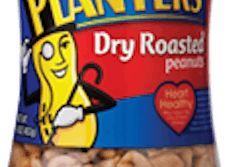Regarding the above headline, most consumers would laugh and not think twice before answering “pizza” as they wait for their Friday-night delivery. But as packaging professionals, we wouldn’t answer quite so fast because we know that packaging can indeed have a huge impact on one’s health.
In 2005, for example, there was a product recovery related to baby milk. In 2010, a cereal recovery was conducted. In 2011, products containing BPA were removed from the market. In each case, there was an unexpected migration of a chemical from the packaging to the food product inside. Clearly these are the exceptions. The majority of the time, packaging does its job: it protects the product for, and delivers the message to, the consumer. But things can go wrong, and when you consider that a large grocery store can have more than 50,000 packaged products on its shelves, it’s a wonder things don’t go wrong more often.
Many of those products are fresh fruits and vegetables, and a growing number of them are organic products with fewer total ingredients but more raw products. We’ve all seen the rapidly increasing globalization of food commerce, and threats to attack the food supply suggests an international approach to food safety. As part of its charge in the implementation of the 2011 Food Safety Modernization Act (FSMA), the Federal Drug Trends in Regulatory Climate Administration (FDA) extended its reach globally and launched a new strategy to build food safety partnerships around the world, including developing global data information system networks to share real-time information.
As supply chains both local and global become more complex, packaging will receive an increasing focus. Don’t gamble with your business and your brand. Embrace a proactive collaborative process to manage packaging risk so that you can consistently deliver package performance, brand message, and food safety to consumers. Here are some key components to embed into your business to help safeguard food safety throughout your global packaging value chain.
Qualification & compliance
Ensure that you have established a qualification process such as ISO principles, HACCP, or another continuous improvement process with which to qualify your supply chain partners. Conduct regular meetings and/or audits to make sure everyone is compliant with safety and regulatory requirements. Led by the European Union and the U.S., food safety continues to be at the forefront of the regulatory effort for many world governments. Due to international commerce, and the multinational presence of many food and beverage brands and restaurant chains, it is clear that these issues cannot be contained within the borders of a single country. The complexity of the supply chain makes it unlikely that the answers can be found in a single piece of legislation or innovation. Thus, it’s especially important that you do what you can to take ownership of these issues and build best practices around qualification and compliance within your ongoing standard operating business procedures.
Development & testing
Your development and testing processes should be collaborative and span across packaging competencies and stakeholders. Make sure that any raw materials used within the development process are not only compliant with safety and regulatory requirements but also are approved for food use applications. This is especially important as packaging materials manufacturers are exploring different ways of making packaging more sustainable in order to accommodate consumers who strive for more sustainable lifestyles.
Don’t scrimp on testing. Prepare to conduct performance, sensory, and safety testing. Explore incorporating third-party lab verification that the product meets specifications.
Production & communication
We should all be strong advocates of increasing collaborative activity among suppliers, manufacturers, and their partners, and this is especially true when it comes to the production process and communication. It’s important to work together to develop standard operating procedures into the production process that incorporate statistical process controls. Integrate ongoing evaluations and regularly monitor the production process to identify any variability. Establishing clear performance-based specifications and supplier quality and safety scorecards ahead of time will allow complaints and concerns to be readily addressed.
Packaging is a key ingredient in food safety and its importance will continue to grow and receive increasing attention. Times have changed. Each step in the supply chain is more susceptible than before. Whether you decide to order a pizza tonight or not, ingredients matter—for both the pizza and the box.
Mike Richmond ([email protected]) is vice president of Packaging & Technologies Global Solutions (PTIS), a division of HAVI Global Solutions Direct, LLC. Sam Messina ([email protected]) is senior director, Quality and Continuous Improvement, at HAVI Global Solutions. ptisglobal.com


























